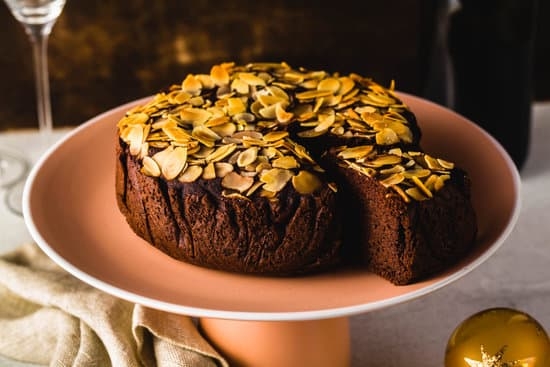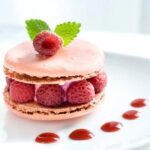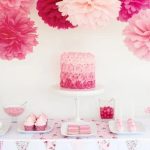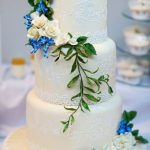When it comes to decorating cakes, the choice of icing plays a crucial role in determining the design, texture, and overall appeal of the final product. From creating intricate patterns to adding a burst of color, icing is a versatile element that allows for endless creativity in cake decoration. Whether it’s a simple birthday cake or an elaborate wedding cake, the type of icing used can make all the difference in the presentation.
Icing is not just a finishing touch on a cake; it is an essential component that can transform a plain dessert into a stunning masterpiece. The type of icing used can significantly impact the taste and aesthetics of the cake, making it an integral part of the baking process. Different types of icing offer various textures, flavors, and functionalities that cater to different preferences and decorating styles.
In this article, we will delve into the world of cake decoration and explore the significance of icing in creating visually appealing treats. From tracing the historical roots of using icing to decorate cakes to dissecting the various types such as buttercream, fondant, and royal icing, we will uncover how each kind contributes to the artistry of cake decorating.
Join us as we take a closer look at what icing is used to decorate cakes and discover how it can elevate any dessert creation to new heights.
History of Cake Decorating
Cake decorating has a rich history that dates back centuries, with the use of icing as a primary method for embellishing cakes. The practice of decorating cakes can be traced back to ancient civilizations, where elaborate designs were created using ingredients like sugar, honey, and even marzipan. However, it was not until the 17th century in Europe that icing as we know it today began to take shape.
During the Renaissance period, icing made from sugar was becoming more refined and accessible, leading to an increase in the popularity of using icing to decorate cakes. Elaborate royal feasts and celebrations often featured intricately decorated cakes adorned with sugar flowers, intricate patterns, and even edible sculptures. This marked the beginning of cake decoration as an art form that would continue to evolve over the centuries.
As time progressed, different regions developed their own unique styles and techniques for cake decoration using icing. In England, royal icing became a popular choice for creating intricate details on cakes due to its smooth texture and ability to harden when dried.
Meanwhile, in France, chefs began experimenting with fondant icing, which could be rolled out into thin sheets and draped over cakes for a flawless finish. Today, cake decorators have a wide range of options when it comes to choosing the right type of icing for their creations.
Types of Icing
When it comes to decorating cakes, the type of icing used plays a crucial role in achieving the desired look and taste. There are several varieties of icing that are commonly used by bakers and pastry chefs around the world. Each type of icing has its unique characteristics, such as texture, flavor, and versatility, making it suitable for different cake decorating techniques.
One of the most popular types of icing is buttercream. Buttercream icing is made from butter or shortening mixed with powdered sugar and flavorings like vanilla or chocolate. It has a creamy and smooth texture that makes it perfect for piping intricate designs on cakes or creating smooth finishes. Buttercream is often used for birthday cakes, wedding cakes, cupcakes, and other festive desserts due to its delicious taste and versatility in decoration.
Another widely used type of icing is fondant. Fondant is a thick paste made from sugar, water, gelatin or glucose syrup that can be rolled out into a smooth sheet to cover cakes or sculpted into various shapes for decorative elements.
Fondant provides a clean and polished look to cakes and allows for intricate designs to be created with ease. It is commonly used in special occasions like weddings or themed parties where a more refined finish is desired on the cake.
Royal icing is another type of icing that has been used traditionally in cake decoration. Made from confectioners’ sugar and egg whites beaten together until stiff, royal icing dries hard which makes it ideal for creating delicate 3D decorations like flowers, lace patterns, or intricate piping work on cakes. Although royal icing requires skill and practice to master its application techniques, it offers unmatched precision and detail in cake decorating projects.
| Type of Icing | Main Ingredients |
|---|---|
| Buttercream | Butter/shortening + powdered sugar + flavorings |
| Fondant | Sugar + water + gelatin/glucose syrup |
| Royal Icing | Confectioners’ sugar + egg whites |
Buttercream Icing
To make buttercream icing, you will need simple ingredients such as butter, powdered sugar, vanilla extract or other flavorings, and a small amount of milk or cream. The basic technique involves creaming softened butter with powdered sugar until light and fluffy, then adding in flavorings and adjusting the consistency with liquid if needed.
There are variations of buttercream icing, including American buttercream (made with butter and powdered sugar), Swiss meringue buttercream (whipped egg whites with sugar and butter), and Italian meringue buttercream (cooked sugar syrup added to whipped egg whites and butter).
Buttercream icing is ideal for crumb coating cakes before applying fondant or royal icing for a smooth finish. It can also be used to frost cakes in layers or create intricate piping designs for decorative purposes. Its creamy texture allows for easy manipulation, making it suitable for creating different textures and patterns on cakes. Whether you are a beginner or experienced baker, mastering the art of using buttercream icing can elevate your cake decorating skills to new heights.
Fondant Icing
One of the key features of fondant icing is its ability to create a flawless surface on cakes, hiding imperfections and providing a clean canvas for decorating. Fondant can be tinted with food coloring to achieve vibrant hues, making it ideal for creating visually striking designs. It also has a firm consistency once dried, allowing intricate details like flowers, ribbons, and figurines to hold their shape without melting or losing definition.
Here are some common types of fondant used in cake decoration:
- Traditional rolled fondant: made with powdered sugar, gelatin, corn syrup, and glycerin.
- Marshmallow fondant: created by melting marshmallows and mixing them with powdered sugar.
- Store-bought fondant: pre-made fondant available in various colors that can be easily rolled out and applied to cakes.
Whether you are a beginner or an experienced baker, working with fondant icing opens up endless possibilities for creativity in cake decorating. From elegant wedding cakes to whimsical birthday designs, fondant provides a polished look that will impress any recipient. Mastering the art of handling and shaping fondant may take practice, but the stunning results make it well worth the effort in creating show-stopping cakes for any occasion.
Royal Icing
Characteristics of Royal Icing
One of the key characteristics of royal icing is its quick drying time, which makes it ideal for creating detailed decorations that need to set quickly. This icing hardens as it dries, providing a sturdy finish that can withstand heat and humidity. Additionally, royal icing has a glossy appearance once set, adding an elegant touch to any cake design.
Traditional Use in Decorating Cakes
Royal icing has been traditionally used in cake decorating for centuries, often seen on wedding cakes and special occasion cakes. Its versatility allows for intricate lacework designs, delicate flowers, and other ornate details that elevate the overall look of a cake. Bakers and decorators often use royal icing for creating borders, lettering, and other decorative elements that require precision and stability.
Overall, royal icing offers a timeless appeal in cake decoration with its firm texture and ability to create elaborate designs. Whether used for simple piping or more complex embellishments, this type of icing remains a popular choice among professional bakers and home decorators alike.KEYWORDS: what icing is used to decorate cakes.
Tips for Decorating With Icing
Decorating cakes with icing can bring a whole new level of creativity and artistry to your baked creations. Whether you are a seasoned baker or just starting out, mastering the art of cake decoration with icing can elevate your desserts to the next level. In this section, we will explore some practical tips and techniques for using icing to decorate cakes effectively.
Color Mixing
One important aspect of decorating cakes with icing is color mixing. To achieve the perfect shade for your design, it is essential to understand how different colors blend together. Start by using gel food coloring in small amounts and gradually add more until you reach the desired hue. Remember that colors may deepen as they sit, so it’s always best to start with lighter shades and adjust as needed.
Piping Techniques
Piping is a common technique used in cake decoration, and mastering different piping tips can take your designs to the next level. Practice using various tips such as round, star, leaf, and petal tips to create different textures and patterns on your cakes. Remember to apply consistent pressure when piping to ensure even lines and shapes.
Texture and Detail
Adding texture and detail to your cake decorations can make them more visually appealing. Experiment with different tools like offset spatulas, brushes, combs, or stencils to create unique finishes on your cakes. You can also use piping bags with different attachments for intricate designs or create 3D elements with fondant or gum paste.
By incorporating these tips and techniques into your cake decorating process, you can create stunning masterpieces that not only taste delicious but also look visually appealing. Remember that practice makes perfect, so don’t be afraid to experiment with different styles and methods until you find what works best for you. With patience and creativity, you can become a skilled cake decorator using various types of icing to bring your sweet creations to life.
Icing Tools and Equipment
When it comes to decorating cakes with icing, having the right tools and equipment is essential to achieve professional-looking results. Whether you are a beginner or an experienced baker, having the necessary supplies can make all the difference in your cake decorating endeavors. Some of the essential tools and equipment needed for decorating cakes with icing include piping bags, tips, spatulas, turntables, and more.
Piping bags are a must-have tool for anyone looking to decorate cakes with icing. These disposable or reusable bags allow you to easily pipe different designs, shapes, and patterns onto your cakes. Paired with various tips that come in different sizes and shapes, piping bags are versatile tools that can help you create intricate decorations on your cakes. From writing messages to creating intricate flower designs, piping bags and tips are indispensable for any cake decorator.
Another important tool for cake decoration with icing is a good quality spatula. A offset spatula is ideal for spreading icing smoothly and evenly on the surface of the cake. It helps achieve a clean finish and is perfect for creating sharp edges or smooth sides on your cakes.
Investing in a high-quality spatula can make a significant difference in the overall look of your decorated cakes. Additionally, using a turntable allows you to easily rotate the cake while decorating, ensuring even coverage and precision when applying icing to your creations.
Conclusion
In conclusion, the art of cake decoration with icing has a rich history and continues to be an essential element in creating visually stunning and delicious treats. From ancient civilizations to modern-day pastry chefs, the use of icing has evolved significantly, offering a diverse range of options for decorating cakes. Whether it is the creamy texture of buttercream, the smooth finish of fondant, or the intricate designs with royal icing, each type brings its unique characteristics to cake decoration.
Exploring the different types of icing used to decorate cakes opens up a world of creativity and possibilities for bakers and decorators alike. Buttercream icing provides a versatile option with its smooth consistency and ease of application for various designs. Fondant icing offers a more precise and polished look, ideal for intricate details and sculpted creations. Meanwhile, royal icing remains a classic choice for traditional designs and delicate decorations that stand out on any cake.
With practical tips, techniques, and essential tools at hand, anyone can master the art of using icing to decorate cakes beautifully. Whether it’s piping intricate patterns, molding fondant figurines, or creating elegant details with royal icing, the key lies in practice and patience.
The world of cake decoration is infinite when it comes to exploring what icing is used to decorate cakes – each type bringing its own flair and opening up endless possibilities for creative expression in the realm of baking.
Frequently Asked Questions
What Kind of Frosting Is Best for Decorating Cakes?
The best frosting for decorating cakes depends on the desired outcome and personal preference. Buttercream frosting is commonly used for its versatility, as it can be easily colored and piped into intricate designs. Fondant is another popular choice for creating smooth, professional-looking finishes on cakes.
What Frosting Do Professionals Use?
Professionals often use Swiss meringue buttercream or Italian meringue buttercream for decorating cakes. These types of frosting are known for their silky texture, stability, and ability to hold intricate designs well. They are also favored for their less sweet flavor compared to traditional American buttercream.
What Are the 2 Types of Icing on Cakes?
The two main types of icing on cakes are buttercream and fondant. Buttercream icing is made from butter, powdered sugar, and flavorings like vanilla extract.
It is creamy and soft with a rich flavor, making it a popular choice for decorating cakes. Fondant icing is a rolled sugar paste that creates a smooth, elegant finish on cakes and allows for intricate decorations to be added on top.

Welcome to our cake decorating blog! My name is Destiny Flores, and I am the proud owner of a cake decorating business named Cake Karma. Our mission is to provide delicious, beautiful cakes for all occasions. We specialize in creating custom cakes that are tailored specifically to each customer’s individual needs and tastes.





